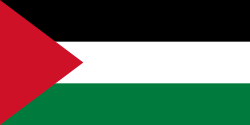Over 54 Killed in Intensified Airstrikes on Khan Younis, Gaza
 Palestinia
PalestiniaIn a significant development, the Gaza Strip has seen a substantial increase in the inflow of humanitarian aid following a recent ceasefire between Hamas and Israel. On the first day of the truce, 630 trucks carrying essential supplies entered the region, with another 915 trucks arriving the following day, marking the highest daily volume since the conflict escalated in October 2023.
The United Nations reported that much of the aid is focused on providing food and medical supplies to the more than two million residents of Gaza, who are facing severe humanitarian challenges, including food insecurity and limited access to health care. According to the World Food Programme (WFP), efforts are underway to send at least 150 truckloads of food daily and to replenish local bakeries.
Egypt has played a crucial role in facilitating this aid flow, allowing the passage of 650 trucks over the first two days of the ceasefire. However, the logistical challenges persist, as trucks are required to first divert through Israel before heading into Gaza.
Humanitarian agencies caution that despite these efforts, the needs of the Gazan population remain immense. The health system in Gaza, ravaged by weeks of conflict, is in dire need of rehabilitation, with only half of the area’s hospitals partially operational. The push for aid comes amidst a dire humanitarian crisis, with many areas already on the brink of famine.
To assist in infrastructure needs, Qatar is financing a land bridge to supply 12.5 million liters of fuel over the initial days of the ceasefire. This fuel is intended to provide electricity to hospitals and essential services.
While the ceasefire has enabled a vital influx of aid, experts stress the importance of maintaining open and efficient border crossings to address the overwhelming humanitarian demands facing Gaza.
 Palestinia
Palestinia Palestinia
Palestinia Palestinia
Palestinia